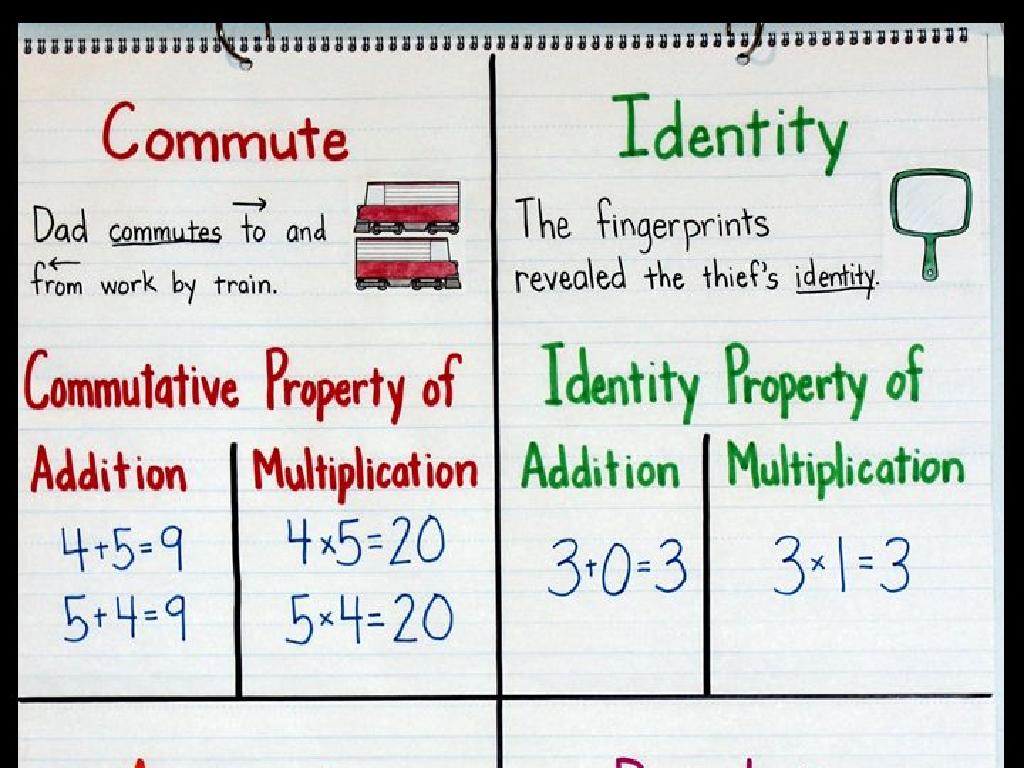The Beginnings Of Rome
Subject: Social studies
Grade: Sixth grade
Topic: Rome And The Byzantine Empire
Please LOG IN to download the presentation. Access is available to registered users only.
View More Content
Welcome to Ancient Rome!
– Explore Rome’s foundation
– Legend of Romulus and Remus, the twin founders
– Rome’s impact on history
– Rome’s republic and empire shaped modern governance
– The Byzantine Empire’s legacy
– Byzantine culture influenced art, law, and religion
– Today’s focus: Rome’s beginnings
|
This slide introduces students to the grandeur of Ancient Rome and sets the stage for learning about its beginnings. Emphasize Rome’s lasting influence on the modern world, including its legal systems, language, and architecture. Highlight the Byzantine Empire’s role in preserving and enhancing Roman culture. Today’s lesson will delve into the legendary origins of Rome, the significance of its geographical location, and the early development of Roman society. Encourage students to think about how ancient civilizations continue to affect our lives today.
The Founding of Rome
– Legend of Romulus and Remus
– Twin brothers raised by a she-wolf, founders of Rome.
– Rome’s establishment in 753 BC
– According to tradition, Rome was founded by Romulus.
– Transition to Rome as a Kingdom
– Rome was initially ruled by kings, not emperors.
– Significance of Rome’s foundation
– Rome’s founding myths shape its cultural heritage.
|
This slide introduces students to the legendary beginnings of Rome, a story that combines myth and history. The tale of Romulus and Remus, the twin brothers raised by a she-wolf, sets the stage for the city’s mythical foundation. Emphasize that while the story is a legend, it holds a significant place in Roman culture and identity. The establishment of Rome in 753 BC marks the beginning of its timeline, and the transition to a kingdom lays the groundwork for understanding the evolution of Roman governance. Discuss the importance of these foundational myths and how they were integral to Rome’s self-image and the legitimization of its power. Encourage students to think about how legends and historical facts can intertwine to shape a society’s narrative.
The Roman Republic: From Kingdom to Republic
– Rome’s shift from monarchy
– Rome transitioned from being ruled by kings to a republic around 509 BCE.
– The Roman Senate’s role
– The Senate was a powerful body of lifelong legislators in ancient Rome.
– Consuls as leaders
– Consuls were elected officials who led the Roman Republic.
– Republic: A Roman innovation
– A republic is a state where power is held by the people and their elected representatives.
|
This slide introduces the concept of the Roman Republic and its significance in world history. The transition from a kingdom to a republic marked a pivotal change in Roman governance, establishing a system that allowed for elected representatives. The Roman Senate, a group of prominent citizens, played a crucial role in legislation and governance. Consuls, elected annually, were the executive leaders of the Republic. The concept of a republic was revolutionary at the time, laying the foundation for modern democratic systems. Encourage students to compare the Roman Republic with the democratic systems they are familiar with today, and discuss the importance of public participation in governance.
Social Structure of Ancient Rome
– Distinction between Patricians and Plebeians
– Patricians: wealthy elite, Plebeians: common citizens
– Varied roles and rights in society
– Patricians had more power, Plebeians fought for rights
– The Struggle of the Orders
– Social conflict between classes for equality
– Impact on Roman governance
|
This slide aims to introduce students to the complex social hierarchy of ancient Rome, focusing on the two main classes: Patricians and Plebeians. Patricians were the aristocratic class with access to power and privileges, while Plebeians were the commoners with limited rights. Over time, Plebeians struggled and succeeded in gaining political representation and rights, leading to significant social changes. This ‘Struggle of the Orders’ played a crucial role in shaping Roman laws and governance. Encourage students to compare ancient Roman social structures with modern society, and discuss the importance of social equality and rights.
Roman Achievements
– Engineering and architecture feats
– Aqueducts for water, amphitheaters for events
– Development of Roman legal system
– Basis for many modern legal systems
– Cultural advancements
– Rich mythology, literature, and arts
– Technological innovations
– Road systems, military equipment
|
This slide highlights the significant contributions of ancient Rome to various fields. Discuss how Roman engineering and architecture, such as aqueducts and amphitheaters, were groundbreaking for their time and have influenced modern infrastructure. Explain the development of the Roman legal system, which has served as a foundation for many contemporary legal principles and practices. Explore cultural advancements, including Roman mythology, literature, and the arts, which have had a lasting impact on Western culture. Lastly, touch on technological innovations like advanced road systems and military equipment that have shaped progress in public works and warfare. Encourage students to think about how these achievements have had a lasting legacy and still affect our lives today.
The Expansion of Rome
– Rome: From city to empire
– Roman conquests and territories
– Regions like Gaul, Britain, and parts of Africa and Asia were conquered.
– Expansion’s impact on society
– Social structures evolved with the influx of diverse peoples.
– Economic effects of growth
– Trade flourished, increasing wealth but also creating economic disparities.
|
This slide explores the transformation of Rome from a small city into a vast empire. Highlight the key conquests that led to the expansion of Roman territory, including notable regions that came under Roman rule. Discuss how this growth affected Roman society, such as changes in social hierarchy and the integration of different cultures within the empire. Additionally, address the economic impact, including the increase in trade and wealth, as well as the economic challenges that arose. Encourage students to think about how the expansion might have felt for both the Romans and those they conquered.
The Decline of the Roman Republic
– Political corruption’s role
– Leaders manipulated the system for personal gain, leading to instability.
– Julius Caesar’s rise to power
– Caesar gained support, defying the Senate and becoming a dictator.
– The fall of the Republic
– Caesar’s assassination led to civil wars and the Republic’s collapse.
– Birth of the Roman Empire
– Augustus Caesar established the Empire, ending the era of the Republic.
|
This slide outlines the factors contributing to the decline of the Roman Republic. Discuss how political corruption and the manipulation of power by leaders led to widespread instability. Highlight Julius Caesar’s rise as a pivotal moment, where his accumulation of power and eventual dictatorship challenged the Republic’s foundations. Explain the chaos following his assassination, which ultimately resulted in the Republic’s downfall. Conclude with the transition to the Roman Empire under Augustus Caesar, marking a significant shift in Rome’s history. Use this opportunity to discuss the concept of republic versus empire and the implications for governance and society.
Class Activity: Building Rome
– Divide into groups for a Rome model
– Research a Roman society aspect
– Focus on politics, economy, religion, or daily life
– Construct Roman buildings and roads
– Use cardboard, clay, or paper mâché
– Create Roman social structures
– Represent forums, baths, or family life
|
This interactive class activity is designed to engage students with the early history of Rome by dividing them into groups and assigning each group a different aspect of Roman society to research and present. Possible research topics include Roman politics, economy, religion, or daily life. Students will use craft materials such as cardboard, clay, or paper mâché to construct models of Roman buildings, roads, and social structures, such as forums, baths, and typical Roman family homes. This hands-on approach helps students visualize and understand the components that made up early Roman society. Teachers should provide a variety of materials and guide the students in their research, ensuring that each group covers a unique aspect of Rome to enrich the overall class learning experience.






